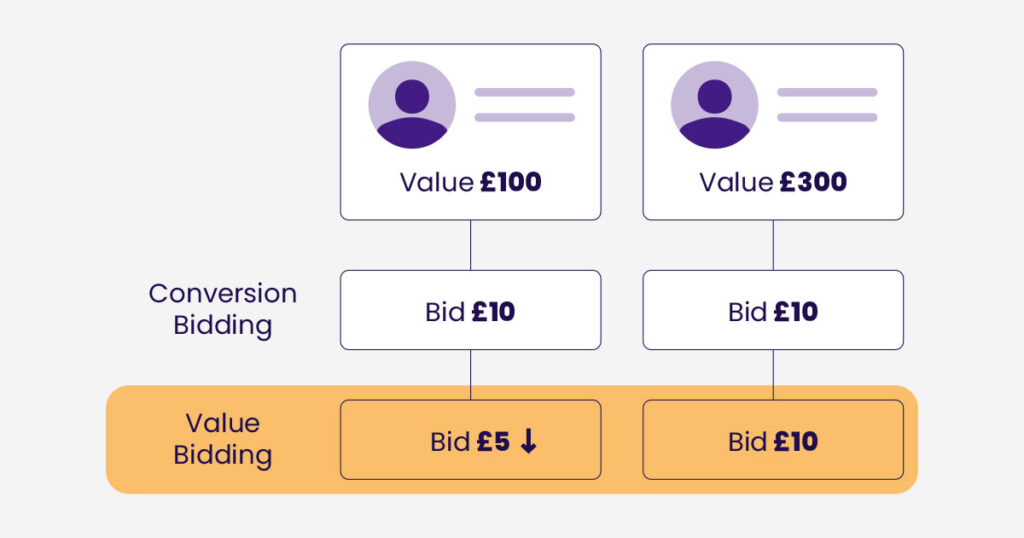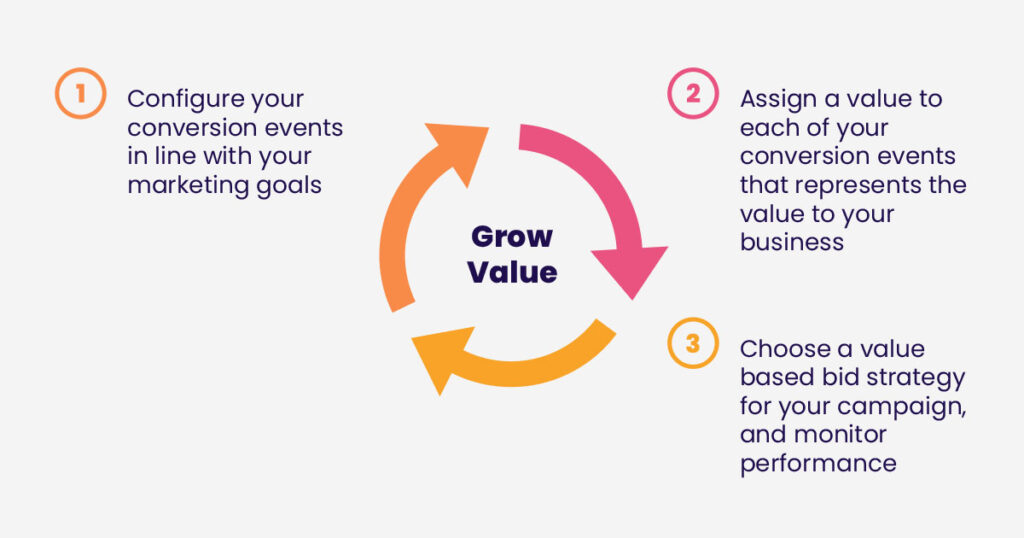Whilst search engines offer numerous bid strategy options to help advertisers reach their goals, these strategies are only as strong as the data that feeds them. By providing broader context regarding the value of certain conversion events, advertisers can benefit from a bid strategy optimizing toward financial performance, and not just conversion volume.
All bid strategies, regardless of objective, function on a similar basis; the engine will assess available campaign performance data in order to identify high-opportunity auctions, and bid accordingly on your behalf. For many bid strategies, the required information is already available within your account, however, for advertisers who want to optimize towards profit or revenues, additional information will need to be provided to the engine so bidding decisions can be made accordingly. There are several methods by which advertisers can provide this information in order to benefit from Value Based Bidding.
What is Value-Based Bidding?
Value-based bidding is the management of bids with the aim of improving the value of the conversions received, not simply increasing the volume of conversions. For example, retailers selling a broad range of items with various prices may benefit more from selling one £3,000 item than they would from selling twenty £10 items. Value-based bidding will allow the engine to optimize towards conversion events which will provide the highest revenues and returns rather than simply aiming to increase the volume of conversion events.

Value-based bidding comes in two forms: the ‘Maximise conversion value’, and ‘target ROAS’ bid strategies. Whilst Max Conversion Value will aim to achieve the highest cumulative value from the conversions received, Target ROAS will contextualize the realized value against your ad spend for a positive return.
How to get started with Value-Based Bidding
Step 1: Ensure you have conversion events configured within your Ads account for key on-site actions (E.g. Purchase, brochure download, inquiry form)
Step 2: Assign a value to each of your conversion events that represents the value to your business. Whilst a ‘purchase’ has a true value, placeholder values can be assigned to non-revenue-driving actions which still play a role in the user journey and have value (E.g. a brochure download). Ensure the values assigned to each conversion event accurately reflects their order of importance; if your products retail at £10, setting a conversion value to £30 against a brochure download could cause the bid strategy to prioritize brochure downloads instead of purchases due to the higher value.
Step 3: Choose a value-based bid strategy for your campaign and monitor performance during and after the learning phase. Campaign values and other bid strategy parameters can be tweaked in flight for optimal performance.

Whichever value-based bid strategy you feel is right for your business, the main takeaway is that Google Ads now offers a way of improving the value of the conversions received, not simply increasing the volume of conversions, so you can efficiently allocate your advertising budget based on expected value.




